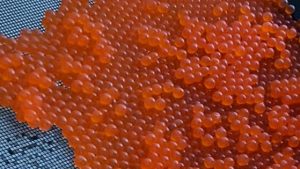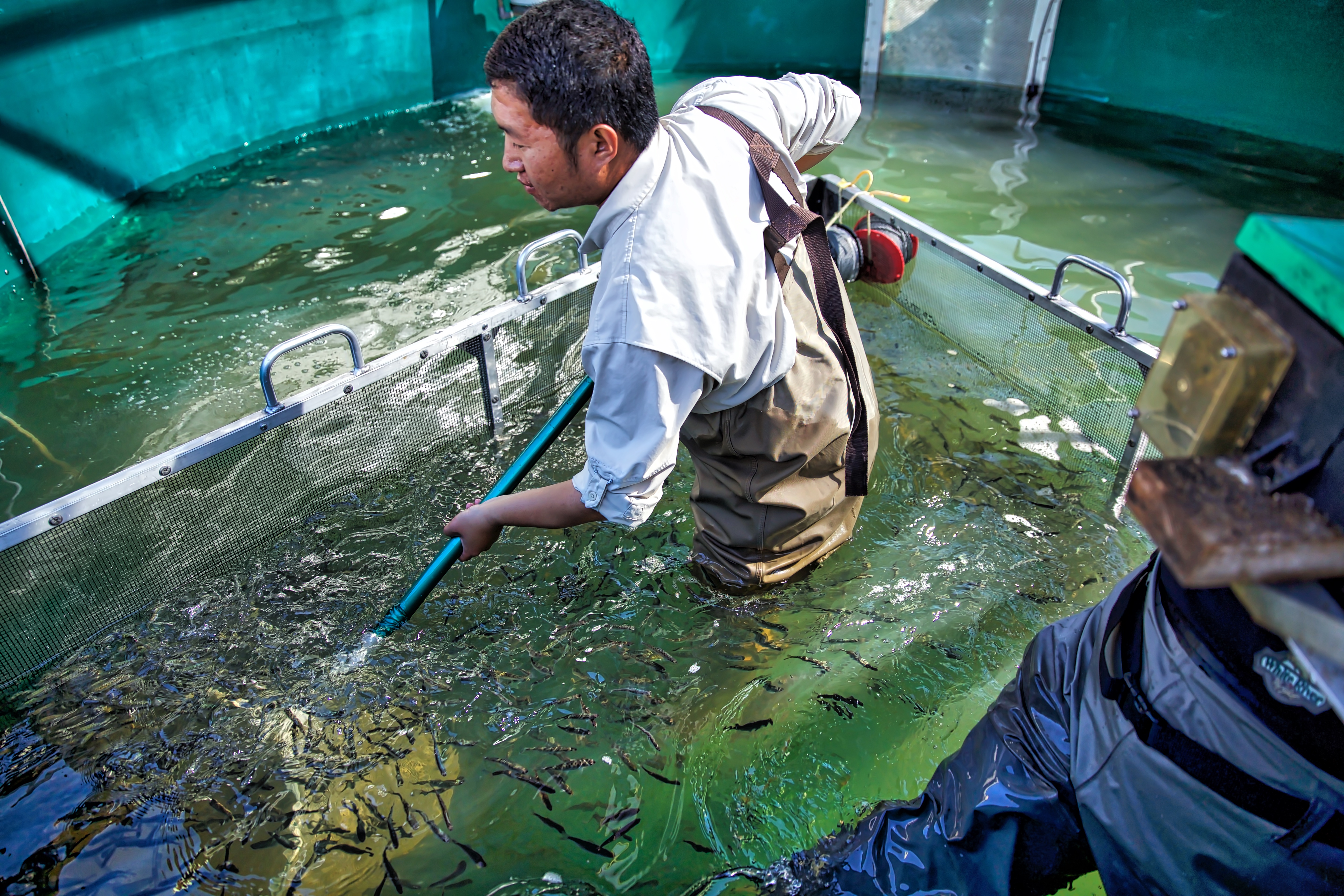A critical component of re-establishing a population of naturally reproducing and self-sustaining spring-run Chinook salmon in the San Joaquin River is by developing a juvenile population for release into the river.
Since spring-run Chinook were extripated from the river in the early 1950s following the construction of Friant Dam, the SJRRP has been working to create a new population of this species in the river.

To achieve that desired result, a process to mimic the natural spawning that occurs in the wild takes place at the Interim Salmon Conservation and Research Facility by the California Department of Fish and Wildlife. At the facility, located just a couple of miles below Friant Dam, eggs are harvested from fully-grown adult female spring-run, fertilized with male donors, incubated, hatched and raised in captivity until they are released as juveniles. Program spring-run Chinook are spawned using both the eggs generated at the SCARF as well as eggs gathered at the Coleman Fish Hatchery on the Feather River which has an existing spring-run population. The expectation is that over time, the San Joaquin River will have its own unique genetic stock of spring-run Chinook salmon.

The Program began releasing broodstock juvenile spring-run Chinook salmon unique to the San Joaquin River in 2016 and since that time has released over a million fish. A small number of these fish have transmitters surgically implanted in order to allow scientists to track their movements, learn about survival rates, habitat usage and determine other scientific information that will help to establish a stable population.

